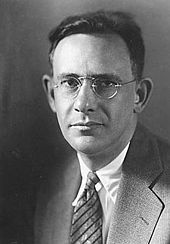Unraveling the Sapir-Whorf Hypothesis: The Language Lens on Thought and Culture

The Sapir-Whorf Hypothesis, also known as linguistic relativity, proposes a profound connection between language and thought, suggesting that the structure and vocabulary of a language shape and influence the way its speakers perceive and conceptualize the world. This hypothesis has sparked intense debates among linguists, cognitive scientists, and philosophers since its inception in the early 20th century. Named after its proponents, Edward Sapir and Benjamin Lee Whorf, this theory challenges conventional wisdom about the universality of human thought and explores the intricate relationship between language, cognition, and culture.
The Foundation of Sapir-Whorf:
Edward Sapir, a renowned linguist, and his student, Benjamin Lee Whorf, laid the groundwork for the Sapir-Whorf Hypothesis. Sapir, in his work “Language,” emphasized the role of language in shaping our perceptions of reality. Whorf, in turn, expanded on Sapir’s ideas, proposing that the structure and vocabulary of a language act as a cognitive framework, influencing how speakers think and experience the world. The Sapir-Whorf Hypothesis comprises two main versions: linguistic determinism and linguistic relativity.
Linguistic Determinism:
Linguistic determinism, the stronger form of the hypothesis, posits that language determines thought entirely. In other words, speakers of different languages perceive and understand the world in fundamentally distinct ways due to the linguistic structures and categories available to them. Whorf, drawing from his studies of indigenous languages like Hopi and Nahuatl, argued that speakers of these languages possess unique cognitive abilities shaped by the linguistic features of their respective tongues.
Critics of linguistic determinism argue that it oversimplifies the complexity of thought and cognition. They contend that while language may influence thought, it does not entirely determine it. The human mind is considered too flexible and adaptive to be solely constrained by linguistic structures.
Linguistic Relativity:
Linguistic relativity, the weaker form of the Sapir-Whorf Hypothesis, acknowledges the influence of language on thought but allows for greater flexibility. It suggests that language can shape and influence our perceptions, but it doesn’t necessarily determine them. This version of the hypothesis recognizes that while language plays a role in shaping cognitive processes, other factors such as cultural influences, personal experiences, and non-linguistic cognitive mechanisms also contribute to thought formation.
Empirical Studies:
Over the years, researchers have conducted numerous studies to explore the validity of the Sapir-Whorf Hypothesis. Some studies have focused on color perception, investigating whether the presence of specific color terms in a language affects how speakers distinguish and remember colors. Other studies have delved into spatial cognition, examining whether the grammatical structure of a language influences how speakers perceive and navigate space.
One well-known study supporting linguistic relativity was conducted by Eleanor Rosch and Carolyn Mervis, who explored the concept of categorization. They found that speakers of different languages categorized objects differently based on the linguistic categories available to them. This suggested that language does play a role in shaping cognitive processes, particularly in the organization of information.
However, criticisms and challenges persist. Many argue that the influence of language on thought is challenging to isolate from other cultural and cognitive factors. Additionally, some studies have failed to replicate findings supporting strong linguistic determinism, leading to ongoing debates within the scientific community.
Cultural Implications:
The Sapir-Whorf Hypothesis extends beyond the realm of language and cognition; it has profound implications for understanding cultural diversity. The idea that different languages can shape distinct worldviews challenges the notion of a universal human experience. Cultures with languages rich in specific terms and concepts may foster unique perspectives on everything from time and space to social relationships and morality.
For instance, languages that heavily rely on spatial metaphors for time (such as English with phrases like “looking forward to the future”) may influence speakers to conceptualize time as a spatial construct. In contrast, languages that use different metaphors might lead to alternative temporal perceptions. These cultural variations highlight the intricate interplay between language, thought, and societal values.
Modern Perspectives:
In recent years, the Sapir-Whorf Hypothesis has experienced a resurgence of interest with advancements in cognitive science, neuroscience, and cross-cultural psychology. Researchers are using innovative methods, including neuroimaging techniques, to explore how language and thought are interconnected at the neural level.
While the hypothesis in its strictest form has faced skepticism, many researchers now recognize that the relationship between language and thought is complex and bidirectional. Rather than a one-way street, where language dictates thought, there is a growing understanding that cognitive processes can also influence language.
Conclusion:
The Sapir-Whorf Hypothesis, though a century old, continues to captivate the minds of scholars and researchers. Its exploration of the intricate relationship between language and thought challenges traditional views on the universality of human cognition. As studies in linguistics, cognitive science, and neuroscience progress, we may gain deeper insights into how language shapes our perceptions, influences cultural diversity, and contributes to the rich tapestry of human experience. While the hypothesis remains a subject of debate and scrutiny, its enduring legacy lies in the ongoing quest to unravel the complex interplay between language, thought, and culture.
-
What is the Sapir-Whorf Hypothesis?
The Sapir-Whorf Hypothesis, also known as linguistic relativity, proposes that the structure and vocabulary of a language shape and influence the way its speakers perceive and conceptualize the world. It suggests a connection between language, thought, and culture.
-
Who were Edward Sapir and Benjamin Lee Whorf?
Edward Sapir and Benjamin Lee Whorf were linguists who developed and popularized the Sapir-Whorf Hypothesis in the early to mid-20th century. Sapir was a prominent figure in descriptive linguistics, while Whorf, his student, expanded on Sapir’s ideas, particularly in the context of Native American languages.
-
What are the two main versions of the Sapir-Whorf Hypothesis?
The two main versions are linguistic determinism and linguistic relativity. Linguistic determinism posits that language determines thought entirely, while linguistic relativity suggests that language influences thought but does not necessarily determine it.
-
Is the Sapir-Whorf Hypothesis widely accepted among linguists?
The hypothesis has faced both support and criticism. While some linguists and cognitive scientists support aspects of the theory, others argue that it oversimplifies the complex relationship between language and thought. The debate continues, and views on the hypothesis have evolved over time.
-
Can you provide examples of linguistic determinism and linguistic relativity?
An example of linguistic determinism would be the idea that speakers of languages without a past tense may find it challenging to conceive of past events. Linguistic relativity, on the other hand, might suggest that speakers of languages with rich color vocabulary might be more adept at distinguishing and remembering specific colors.
-
Have there been empirical studies supporting the Sapir-Whorf Hypothesis?
Yes, there have been studies exploring various aspects of linguistic relativity. Some studies focus on color perception, spatial cognition, and categorization, suggesting that language can influence how people think and perceive the world. However, the findings are not universally agreed upon, and there are studies that do not support strong linguistic determinism.
-
What are the criticisms of the Sapir-Whorf Hypothesis?
Critics argue that the influence of language on thought is challenging to isolate from other cultural and cognitive factors. Some studies fail to replicate findings supporting linguistic determinism, leading to skepticism about the strength of the hypothesis. Additionally, the hypothesis has been accused of neglecting individual cognitive flexibility.
-
How does the Sapir-Whorf Hypothesis relate to cultural diversity?
The hypothesis suggests that languages with different structures and vocabularies may foster unique worldviews, contributing to cultural diversity. For example, languages with specific terms and concepts may shape how speakers perceive time, space, and social relationships, influencing cultural norms and values.
-
Is the Sapir-Whorf Hypothesis relevant today?
Yes, the hypothesis remains relevant, especially with advancements in cognitive science, neuroscience, and cross-cultural psychology. Modern researchers are using innovative methods to explore the connection between language and thought at the neural level, contributing to an evolving understanding of the complex relationship.
-
Does the Sapir-Whorf Hypothesis suggest that some languages are superior to others in shaping thought?
No, the hypothesis does not imply superiority or inferiority of languages. It highlights the diversity in linguistic structures and suggests that different languages offer unique perspectives on the world. The value judgment of languages is not a central aspect of the Sapir-Whorf Hypothesis.






